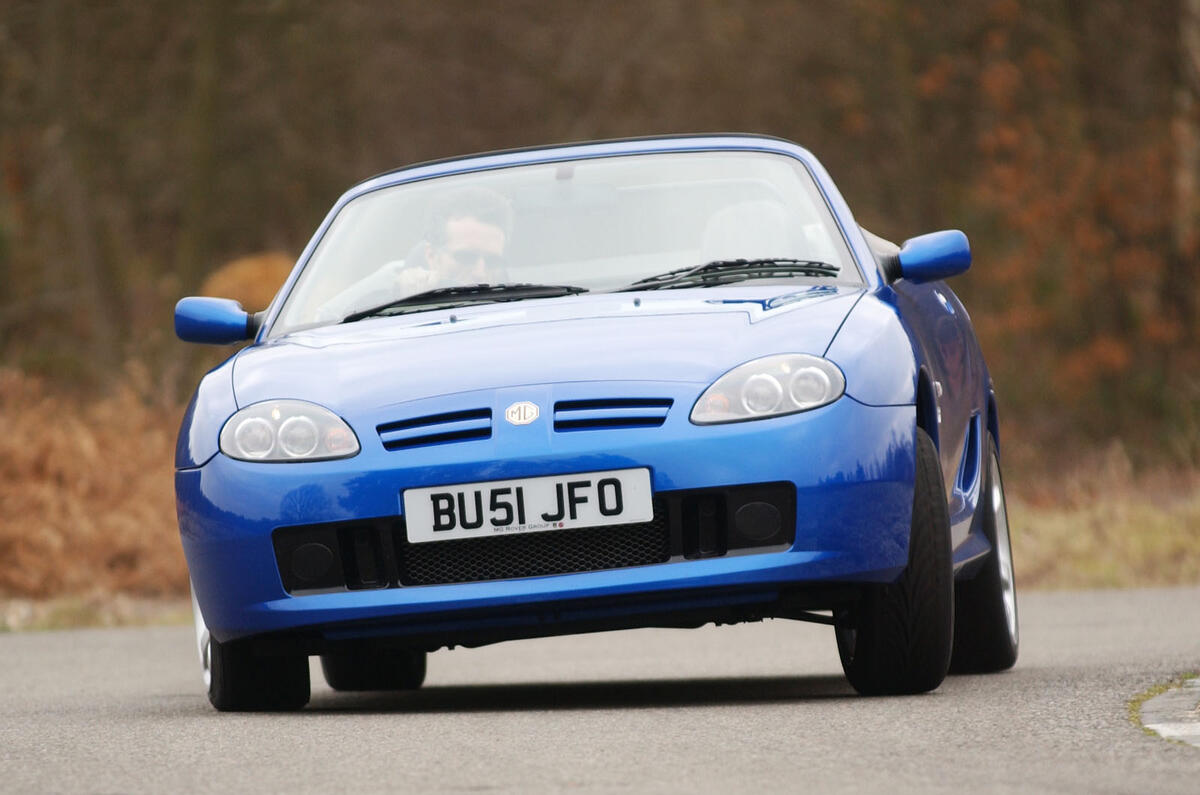Not a fashionable ride right now, the MG TF, which is why you can install yourself in a runner for under £2000. And less still, if you’re willing to take on one needing a little work.
The TF, you’ll recall, was MG Rover’s 2002 facelift of the 1995 MG F, and a surprisingly extensive rework it was, too. Not many cars undergo a change of springing medium part-way through their lives. The MG F’s springs were Hydragas, so bumps were absorbed by nitrogen spheres, and fluid interconnection and clever valving provided the damping effect. The F had a remarkable ride and impressive handling as a result, but the cost of manufacturing these complex units in fairly low quantities eventually made a switch to conventional coil springs and dampers desirable.
The TF’s ride was never quite as good as the Hydragas F managed and it was made worse by the fact that the optional, stiffer sports suspension pack was inadvertently built into 1000s of TFs. But there were upsides to this update, not the least being a bodyshell that was 20% stiffer, sharper handling and a more connected feel via the electric power steering. MG Rover design chief Peter Stevens took the chance to update the MG’s look, too, reshaping it for a slightly more aggressive flavour.
Most obvious was the grille, now presenting body-coloured horizontal slots rather than the more traditional two-piece mesh grille, while the air intakes aft of the rear doors were reshaped with sharper, more defined lines, as were the bumpers, whose air intakes and extractors looked more business-like. The headlight internals were updated with small, circular lenses that were trendy at the time and the engine lid’s lip spoiler was more emphatically sculpted.
Inside, all was much the same, except that the seats were part-trimmed with a faux Alcantara suede that had the durability of a cheap T-shirt, the grey material soon resembling wet mouse fur. But that slightly unsavoury detail would emerge later.
When it was launched, the TF was considered to be an astute update of Britain’s best-selling sports car – yes, the MG F consistently outsold the Mazda MX-5 – and, indeed, in facelifted form, MG’s two-seater continued to hold the title.
![]()




Add your comment